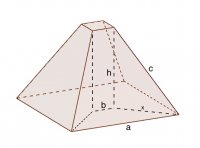FYI - I was talking about the upper idler, attached to the rocker link. It moves back to release tension on the chain.
Changing the lower guide/idler position will slightly alter how much chain the derailleur has to be gather/unspool, but won't effect chain forces as "chain force" (or chain tension - otherwise known as anti-squat) only occurs along the top span of the chain between cassette and chainring (or in the case of your ENR: cassette -> upper idler -> chainring). The lower span of the chain shouldn't see any actual tension (aside from the return spring of the derailleur) or have any meaningful effect on the suspension forces unless you've setup your chain too short and it binds. That's why the moving (upper) idler is extra-clever on this design - it prevents the excessive chain force that massive amount of rearward travel would create. Imagine there was no upper idler, just a conventional straight run between chainring and cassette along the top span. With all that rearward travel, everytime you hit a bump the freehub would lock-in and try to pull an amount of chain equal to the amount of rearward travel from the cassette. Say it tries to pull ~40 mm of chain... 40mm of movement where the chain is being pulled from (the chainring) is going to cause an absolutely massive amount of crank rotation (pedal kickback). Probably something in the ballpark of 40 degrees. If you then reintroduced the upper idler, but kept it in a fixed position - you'd still largely have the same problem. Very,
very slightly reduced PK due to the steepened angle of the chain to the raised idler, but in a practical sense - the pedal kickback would still nearly the same. Now instead of locking the idler in a fixed position, it's mounted to the rocker link (the upper pivoting suspension link between the seatstays and shock). Attach it low enough beneath the rocker link's pivot point so the idler moves in a rearward direction as the suspension compresses, and it reduces the length of chain required to span between the top of the cassette (via the idler) and the chainring as the idler moves rearward.
Consider it like this triangle:
View attachment 386955
If dimension "h" reduces, the length of "a" and "c" will decrease. In the case of the idler on the ENR, the axis (of movement) of "h" would be angled, but the principle is the same.
The length of chain to span from the cassette (via the idler) to the chainring reduces as the idler moves back during suspension compression. The amount of chain the movement of the idler "releases" is roughly proportionate to the amount of chain pull the rearward travel of the swingarm creates, cancelling out the chain-force and pedal kickback that would otherwise occur if the bike didn't have an idler*.
(*Technically the ENR actually has different chain force/tension/anti-squat in every gear, so there's more variation than just it has no chain-growth and "X" amount of anti-squat across all gears, but that feels like a tale for another day...)
):


